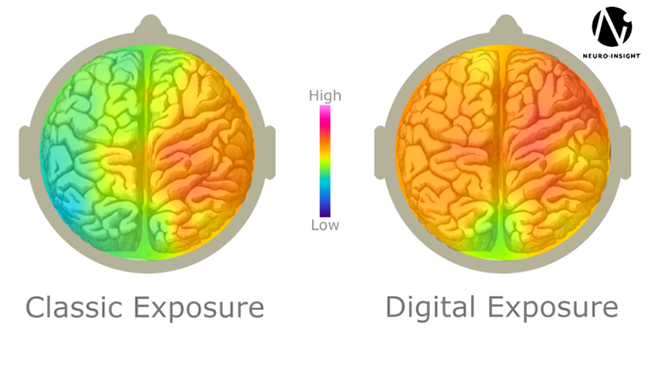DOOH’s impact stronger than classic signs: neuroscience study | WARC | The Feed
The Feed
Read daily effectiveness insights and the latest marketing news, curated by WARC’s editors.
You didn’t return any results. Please clear your filters.

DOOH’s impact stronger than classic signs: neuroscience study
Neuroscience has quantified the impact of out-of-home advertising (OOH) for the first time and found that digital out-of-home (DOOH) signage is 63% more effective than classic signs, according to a research study by Australia’s Outdoor Media Association (OMA).
Why it matters
Scientific proof that advertising seen on DOOH signs has the power to deliver impact in just a one- or two-second glance will inform the development of a new currency that advertisers and agencies can use alongside reach and frequency reports.
Four findings
- Advertising seen on classic signs is just as impactful as a 30-second radio commercial or 15-second television advertising spot.
- Ads seen on digital signs average even higher by delivering 63% more impact than classic signs, proving DOOH signs have the power to deliver impact in a one- or two-second glance.
- By measuring the peak moments of long-term memory encoding and emotional intensity in the brain, Neuro-Insight was able to evaluate the impact of OOH signs on the audience.
- It introduces a qualitative measure to be added in 2022 to OMA’s audience measurement system to give agencies and clients another tool to help them plan and buy OOH campaigns.
Quote
“What we have accomplished in doing this research is [to] go beyond the ‘how many’ part of the equation that comprises most mature media measurements. With the Neuro Impact Factor, we have brought in a quality dimension in a scalable way. We finally have three parts of the triangle of reach, frequency and, now, impact” – Peter Pynta, CEO, Neuro-Insight.
Background
More than 2,000 people participated in the two-year research project and their responses to over 800 classic and digital signs were recorded by Melbourne-based neuroscience research company Neuro-Insight, which used eye-tracking and brain-imaging technology to analyse the brain’s neural response when looking at advertising on OOH signs.
Email this content
